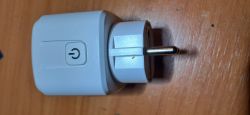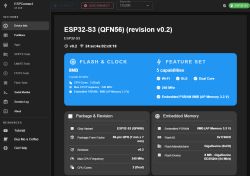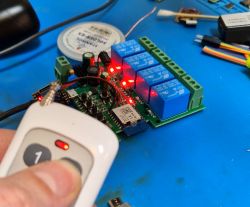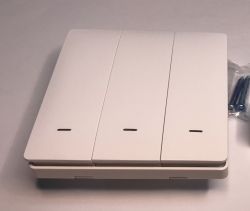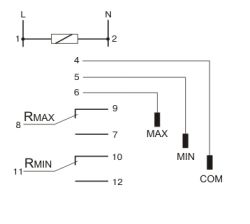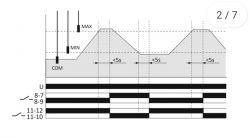FAQ
TL;DR: Want your tank to refill as soon as the level drops? PZ‑829RC offers "two relay contacts" so you can trigger on Rmax, not Rmin. [Elektroda, spinacz, post #19880116]
Why it matters: It keeps irrigation running while the tank auto-fills and protects the pump from dry-run.
Quick Facts
- PZ‑829RC provides dual relays (Rmax/Rmin) to act independently on high and low probes. [Elektroda, spinacz, post #19880116]
- To start top-up early, wire your fill control to the Rmax contacts. [Elektroda, spinacz, post #19880134]
- Zamel PZM‑20 may not detect low-conductivity rainwater, even with sensitivity at maximum. [Elektroda, bar7709, post #19880334]
- With all probes out of water, PZ‑829RC indicates MIN and shorts 8–9 and 11–12. [Elektroda, bar7709, post #19880258]
- Proven fix in this thread: two Omron C61F‑GP controllers achieved the desired control logic. [Elektroda, bar7709, post #19895082]
How do I make PZ‑829RC start filling as soon as it drops below the max level?
Use the Rmax relay for the fill circuit. Place the Max probe at your refill threshold; place the Min probe at dry‑run protection. Then test probe behaviors before final wiring. "You must use the Rmax contacts." How-To: 1. Wire the solenoid/contactor control via Rmax. 2. Set Max at the desired start‑fill level. 3. Verify switching by lifting and dipping probes in water. [Elektroda, spinacz, post #19880134]
Why does my PZ‑829RC only switch when the minimum probe is reached?
On the bench, the controller enters MIN mode when probes are out of water. In that state, contacts 8–9 and 11–12 close. It switches to MAX only after restoring the Min probe first, then Max. This matches the manufacturer’s logic for safe sequencing. It prevents false MAX without a valid MIN reference present. [Elektroda, bar7709, post #19880258]
Where should I place the Min and Max probes to protect the pump and avoid irrigation gaps?
Place the Min probe at the level that should start topping up. Place the Max probe at the full‑tank cutoff. Then drive the fill via Rmax to act from the Max probe. This keeps irrigation active during top‑up between Min and Max. "Place the minimum probe at the level at which you want the topping up to be activated." [Elektroda, spinacz, post #19880299]
Why doesn’t my Zamel PZM‑20 detect rainwater?
PZM‑20 level detection relies on conductivity. Tap water worked, but rainwater did not trigger the probes. Even with maximum sensitivity, detection failed in dirty rainwater. That indicates insufficient conductivity for this model in that application. "Adjustment unfortunately didn't help ... sensitivity to the max and nothing." [Elektroda, bar7709, post #19880334]
What’s a proven workaround if probes won’t sense rainwater and I don’t want floats?
Use independent level controllers that meet your logic. The thread author solved the issue by installing two Omron C61F‑GP controllers. This delivered the desired start‑at‑Max and stop‑at‑Min behavior. It resolved the top‑up control without switching to floats. This approach fit the DIN‑rail control concept. [Elektroda, bar7709, post #19895082]
Can I keep irrigation running while topping the tank with mains water?
Yes. Start filling right after the level drops below your chosen Max point. Keep the Rain Bird watering while the tank tops up. Use Min only for pump dry‑run protection. This sequence removes the gap between Min and Max. It matches the goal to avoid irrigation interruption. [Elektroda, bar7709, post #19880318]
How do I wire a 24 V solenoid valve using a 230/24 V transformer with these controllers?
Switch the transformer primary with the controller’s relay output. Feed the solenoid from the 24 V secondary. This lets the level controller start top‑up automatically and keeps the valve coil on low voltage. The OP targeted a 230/24 V path to the electro‑valve. Confirm ratings and isolation before wiring. [Elektroda, bar7709, post #19880050]
What happens on PZ‑829RC when all probes are out of water?
The controller shows MIN state and changes relay contacts. In this condition, terminals 8–9 and 11–12 are shorted. The LED indicates MIN as well. Reinsert Min first, then Max, to return to MAX control. This behavior matched the shared bench test results. [Elektroda, bar7709, post #19880258]
Is my PZ‑829RC faulty if the MAX relay doesn’t react until MIN triggers first?
It is likely working as designed. MAX action depends on a valid MIN reference in this logic. After comparing to the diagram, the poster concluded it was correct. Follow the probe sequence to see MAX engage. Test by lifting and inserting probes in order. [Elektroda, bar7709, post #19880258]
Are float switches a better choice for low‑conductivity rainwater?
Yes. Floats do not depend on water conductivity, so they work in dirty or low‑ion water. The thread suggested standard float level sensors as an alternative. They integrate well with DIN‑rail relays for simple control. Consider floats if electrode sensing remains unreliable. [Elektroda, spinacz, post #19880347]
How should I set my Max if I want to prioritize rainwater but still allow auto top‑up?
Place the Max probe around mid‑tank or your chosen threshold. That starts mains top‑up only after rainwater drops below that point. The remaining volume can still fill from rainfall. This balances rain use with uninterrupted irrigation. The OP planned Max mid‑tank for this outcome. [Elektroda, bar7709, post #19880125]
How can I quickly bench‑test probe placement before installing in the tank?
Use a tabletop test. 1. Remove both probes; confirm MIN state and contacts 8–9/11–12 close. 2. Insert the Min probe; confirm state change. 3. Insert the Max probe; confirm MAX and relay behavior. Note LED and contact changes at each step. [Elektroda, bar7709, post #19880258]



